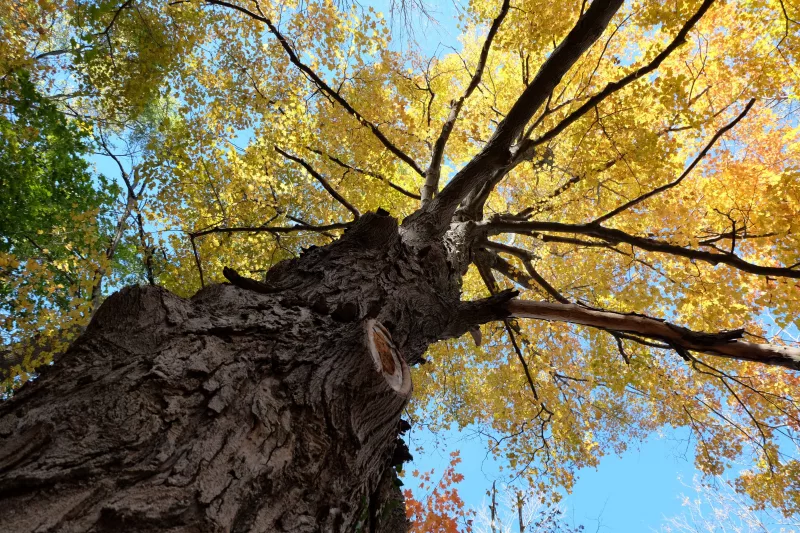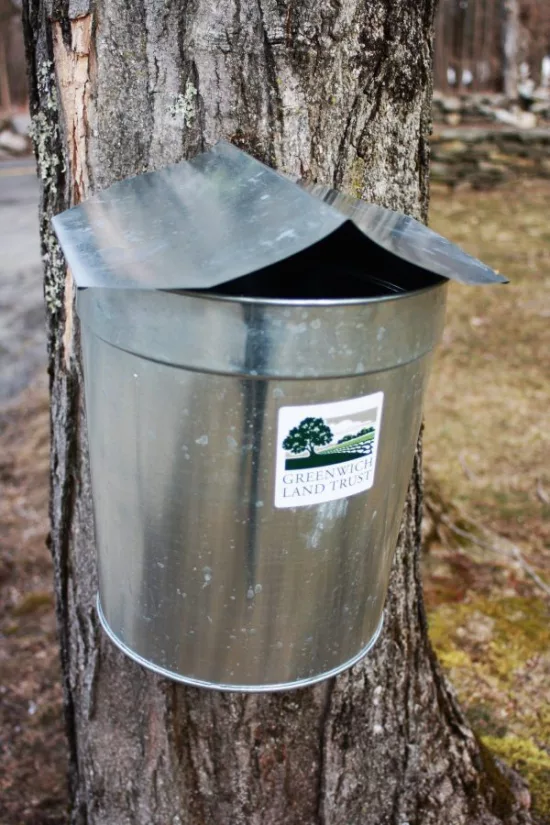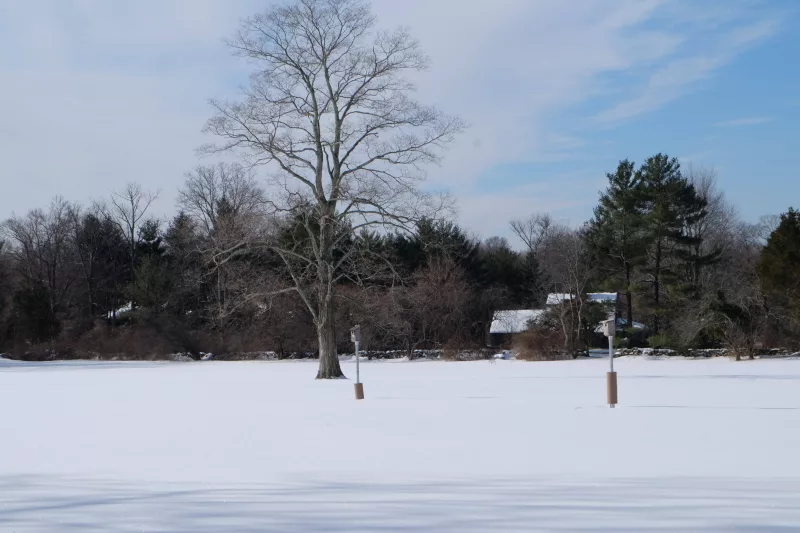
By Janet McMahon
“In October, a maple tree before your window lights up your room like a great lamp. Even on cloudy days, its presence helps to dispel the gloom.”
-John Burroughs, American Naturalist
Take a walk through any New England woods, and chances are you will encounter a sugar maple tree. In the spring, its buds begin to open, revealing its magnificent and imposing structure. In the summer, its majestic canopy is a welcome respite for birds and other woodland creatures. In the fall, its leaves transform into the golden, jewel-toned ephemera depicted by Burroughs, before it falls to the forest floor. In the winter, grayed and bare, the maple lies dormant it seems – or is it?
Maple trees belong to the genus Acer and there are approximately 132 species of maples. Most maples are native to Asia, but there are about 14 species native to the Northeast United States and three species native to Connecticut and Greenwich specifically. Perhaps the most ubiquitous maple on Greenwich Land Trust’s 82 preserves is the Sugar Maple, or Acer saccharum.
One can easily identify a sugar maple tree by its unmistakable leaf: deciduous, up to 20 cm (7.9 in) long with its characteristic five lobes borne in opposite pairs. It’s the symbol proudly displayed on the Canadian flag and on Vermont’s quarter, and rightfully so: The sugar maple is an extremely important species to the ecology of many forests in northern United States and Canada. As previously mentioned, it provides food and shelter for many animals, particularly insects, increasing biodiversity. Its fallen leaves enrich the soil with minerals, making it less acidic and easier for plants to access nutrients. They also help prevent soil erosion, manage surface water runoff and filter pollutants from the air and water.
In addition to its environmental significance, sugar maple trees are harvested for their timber. Sugar maple wood is dense and durable, so it is an excellent material to make furniture, flooring, plywood, and veneer. A hearty tree that can withstand – and actually flourish in – harsh winters, maples are also widely used as ornamental trees on lawns, streets and parks. They are easy to transplant, propagate and grow, not to mention easy on the eyes in autumn. But exercise care when using road salt and de-icer around these trees, as they do not tolerate them well!
 Perhaps the most widely known sugar maple by-product, however, is its delicious maple syrup. Thousands of years ago, the Indigenous peoples from Canada all the way to the Northeastern United States discovered how to harness the clear, sweet sap from the tree and turn it into maple syrup. Traditionally, they used the syrup to cure meats, as a sweetening agent and as an anesthetic. It was later used as a trade item with early European settlers, to whom they also taught this craft. Only recently has it become a popular complement to pancakes and waffles!
Perhaps the most widely known sugar maple by-product, however, is its delicious maple syrup. Thousands of years ago, the Indigenous peoples from Canada all the way to the Northeastern United States discovered how to harness the clear, sweet sap from the tree and turn it into maple syrup. Traditionally, they used the syrup to cure meats, as a sweetening agent and as an anesthetic. It was later used as a trade item with early European settlers, to whom they also taught this craft. Only recently has it become a popular complement to pancakes and waffles!
So how exactly does one make maple syrup? When the temperature begins to rise above freezing in early spring, during what some native tribes call the “sugar moon”, the gathering of the sap begins. Buckets would be hung below where they wanted to collect the sap. Above the bucket, they would “tap” the tree by drilling a hole and then placing a piece of wood in it to serve as a spout from which the clear sap would drip.
Once the sap was collected, it would be stored outdoors overnight so that the lighter water in the sap would rise and freeze. In the morning, the ice would be skimmed off and the remaining water removed through boiling, turning the remaining liquid (maple syrup) into a golden brown color. On average about 40 gallons of sap are needed to produce just 1 gallon of syrup, quite literally the definition of liquid gold!
So while the great Mr. Burroughs was indeed correct that the maple tree is a thing of beauty, the Acer saccharum is so much more than that. Even, and especially, in winter, the sugar maple is a vitally important part of our everyday life. Come experience the process of maple sugaring at Greenwich Land Trust’s Maple Sugar Day on Saturday, March 1. Stop by the Mueller Preserve on Round Hill Road anytime between 11-2 to watch a sugar maple tree being tapped and maple syrup being made. Tickets are $10 per person, rain or shine. Families are welcome but please, no pets! To register, visit https://www.flipcause.com/secure/event_step2/NjUxNTA=/292762
The staff of Greenwich Land Trust collectively wrote this article to bring about awareness and appreciation for the sugar maple tree.






